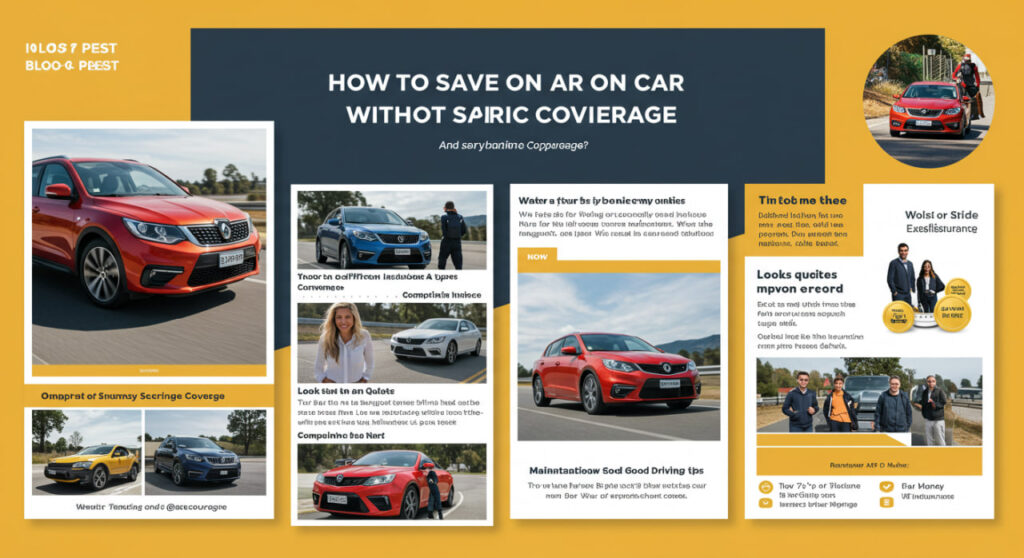Car insurance is a non-negotiable expense for drivers, but the rising costs can feel like a punch to the wallet. The good news? You don’t have to compromise on coverage to keep more money in your pocket. With a bit of strategy and know-how, you can secure affordable car insurance that still protects you, your vehicle, and your peace of mind. This article dives into practical, actionable ways to save on car insurance without skimping on the essentials, offering insights that balance cost-cutting with comprehensive protection.
Why Car Insurance Costs Are Rising
Before exploring savings strategies, it’s worth understanding why car insurance premiums are climbing. Factors like inflation, increased repair costs, and a surge in accident claims have driven up rates across the board. Advanced vehicle technologies, while improving safety, often come with expensive parts, making repairs pricier. Additionally, natural disasters and regional risk factors can influence premiums. Knowing these drivers empowers you to make informed decisions when shopping for coverage that fits both your needs and budget.
Strategies to Save on Car Insurance
Saving on car insurance doesn’t mean settling for bare-bones policies. Here are proven methods to lower your premiums while maintaining robust coverage.
Compare Quotes from Multiple Providers
One of the most effective ways to save is by shopping around. Insurance companies weigh risk factors differently, leading to significant price variations for similar coverage. Use online comparison tools to gather quotes from at least three to five providers. Be sure to compare not just the price but also the coverage details, such as liability limits, deductibles, and add-ons like roadside assistance. A little time spent researching can uncover savings of hundreds of dollars annually.
Bundle Your Policies
Many insurers offer discounts when you bundle car insurance with other policies, such as home or renters insurance. Bundling can save you 10-20% on premiums, depending on the provider. Before committing, verify that the bundled price is genuinely lower than purchasing separate policies from different companies. Also, ensure the insurer has a strong reputation for customer service and claims handling to avoid headaches down the road.
Increase Your Deductible
Raising your deductible—the amount you pay out of pocket before insurance kicks in—can lower your monthly premiums. For example, increasing your deductible from $500 to $1,000 might reduce your premium by 15-25%. However, this strategy works best if you have an emergency fund to cover the higher deductible in case of an accident. Weigh the trade-off between lower premiums and your ability to handle a larger upfront cost.
Take Advantage of Discounts
Insurance companies offer a variety of discounts that many drivers overlook. Common ones include safe driver discounts for a clean driving record, good student discounts for young drivers with strong grades, and low-mileage discounts for those who drive less. Some insurers also provide savings for installing anti-theft devices or completing a defensive driving course. Ask your provider for a full list of discounts and see which ones you qualify for.
Maintain a Good Credit Score
In many regions, insurers use credit-based insurance scores to determine premiums. A higher credit score can signal lower risk, leading to better rates. To improve your score, pay bills on time, reduce debt, and check your credit report for errors. Even small improvements can make a difference over time, so prioritize financial habits that boost your creditworthiness.
Tech Tools to Lower Your Premiums
Technology is reshaping the car insurance landscape, offering innovative ways to save. Here’s how you can leverage tech to cut costs without sacrificing coverage.
Usage-Based Insurance Programs
Many insurers now offer usage-based insurance (UBI) programs, which track your driving habits through a mobile app or a telematics device installed in your car. These programs monitor factors like speed, braking, and driving times to assess your risk level. Safe drivers can earn significant discounts—sometimes up to 30%—based on their driving data. Popular UBI programs include Progressive’s Snapshot and Allstate’s Drivewise. Before enrolling, review the program’s privacy policies to ensure you’re comfortable with data collection.
Shop with Insurtech Apps
Insurtech startups are disrupting traditional insurance with user-friendly apps that simplify quote comparisons and policy management. Apps like The Zebra or Gabi aggregate quotes from multiple insurers, saving you time and effort. Some even analyze your current policy to find better deals. These platforms prioritize transparency, helping you understand coverage options and avoid overpaying for unnecessary add-ons.
Balancing Savings with Adequate Coverage
While saving money is the goal, cutting corners on coverage can leave you vulnerable. Here’s how to ensure you’re still protected.
Understand Your Coverage Needs
Not all drivers need the same level of coverage. For instance, if you drive an older car with low market value, you might skip comprehensive and collision coverage to save money. However, if you have a new or financed vehicle, these coverages are often required. Assess your driving habits, vehicle value, and financial situation to determine the right balance. Liability coverage, which covers damage to others, is non-negotiable and should meet or exceed your state’s minimum requirements.
Consider Add-Ons Wisely
Optional coverages like rental car reimbursement or gap insurance can be valuable but add to your premium. Evaluate whether these add-ons align with your needs. For example, gap insurance is a smart choice if you owe more on your car loan than the vehicle’s worth, as it covers the difference in case of a total loss. On the other hand, if you rarely drive long distances, roadside assistance might not be worth the extra cost.
Review Your Policy Annually
Life changes—like moving to a new area, changing jobs, or paying off your car—can affect your insurance needs. Review your policy at least once a year to ensure it reflects your current situation. Dropping unnecessary coverages or adjusting limits can free up savings without compromising protection. Also, check if your insurer has introduced new discounts or programs that you can take advantage of.
Common Pitfalls to Avoid
When hunting for savings, steer clear of these mistakes that could cost you more in the long run.
Skimping on Liability Coverage
It’s tempting to choose the minimum required liability coverage to save money, but this can backfire. If you’re at fault in a serious accident, low liability limits might not cover damages, leaving you personally responsible for the rest. Opt for higher limits if possible, especially if you have assets to protect.
Ignoring Customer Service Quality
A cheap policy isn’t a good deal if the insurer is slow to process claims or has poor customer service. Research customer reviews and ratings from sources like J.D. Power or the Better Business Bureau before committing. A reliable insurer ensures you’re supported when you need it most.

Forgetting to Update Your Information
Failing to inform your insurer about changes—like a new address or reduced mileage—can result in missed savings. For example, moving to a safer neighborhood or working from home could lower your premiums. Keep your insurer in the loop to maximize discounts.
FAQ
How often should I shop for car insurance?
It’s a good idea to compare quotes every six to twelve months, especially when your policy is up for renewal. Life changes or new discounts can lead to better rates, so regular shopping ensures you’re not overpaying.
Does my credit score really affect my car insurance rates?
Yes, in most states, insurers use credit-based insurance scores to set premiums. A higher score can lower your rates, as it suggests you’re a lower-risk driver. Check your credit report regularly and address any errors to improve your score.
Are usage-based insurance programs safe to use?
Usage-based programs are generally safe, but they collect data on your driving habits. Read the privacy policy carefully to understand what data is shared and how it’s used. If you’re a cautious driver, these programs can lead to significant savings.
Can I save money by paying my premium in full?
Yes, many insurers offer a discount for paying your annual or semi-annual premium upfront instead of monthly. The savings can range from 5-10%, depending on the provider.
What’s the difference between comprehensive and collision coverage?
Comprehensive coverage protects against non-collision events like theft, vandalism, or natural disasters. Collision coverage pays for damage to your car from accidents, regardless of fault. Both are optional but recommended for newer or financed vehicles.
By combining smart shopping, tech tools, and careful coverage choices, you can save on car insurance without sacrificing the protection you need. Stay proactive, review your options regularly, and drive with confidence knowing you’ve got both your budget and safety covered.



